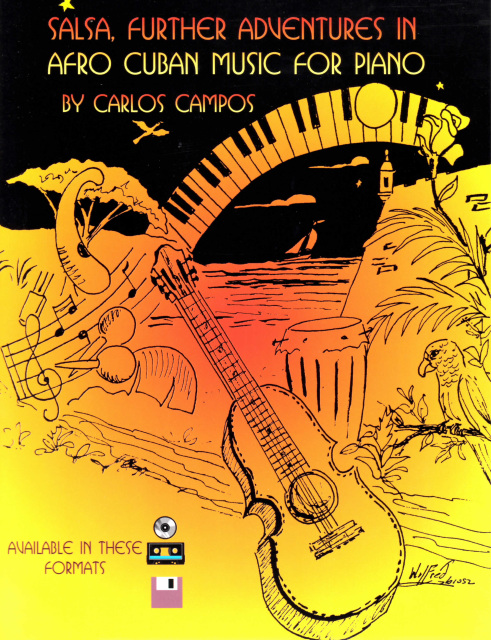Learn basics and fundamentals to playing salsa by ear, including the clave, montuno, 2-3, 3-2 phrasing, chord voicings, chord rhythms, patterns, and more. Trained classically for many years, Jeff eventually took the plunge into the ear world and found that he had a knack for playing Salsa, Latin, and Afro-Cuban styles. Sep 10, 2012. The Salsa is a type of Afro-Cuban dance music. We are going to be learning a simple Montuno pattern to play over a 2-3 Clave. Montunos are rhythmic and harmonic patterns first played by a guitar like instrument called a Tres and later by the piano. Along with the video I have also attached a jam track to. Salsa and Afro Cuban Montunos For Piano authored by Carlos Campos is an extremely informative 100 page book containing over 400 musical examples showing you how to play in these. This book contains great study material for learning the various techniques and rhythms used in playing Latin piano styles. Productions offers music instruction books for Piano, Keyboards, Saxophone, Flute, Brass, Guitar, Mandolin, Violin, Recorder and others. Styles include Blues.
• Welcome to the new A.D.G. Productions web site, • World Class Music Educational Products for Blues, Latin, Funk, Gospel, Jazz, Rock, African, Celtic styles: • The website is sub-divided into physical books or digital download ebooks including individual lessons with PDF, MP3 and MIDI files from our extensive catalog of Blues, Jazz, Funk, Latin, Country, Gospel styles for Piano/Keyboards, Guitar, Bass, Woodwinds and Brass instruments. • These files can be used on your computer, tablets and smart phones. • I would personally like to thank everyone from all over the world who has viewed our website, it is very satisfying to know that we are providing a service to help improve your musicianship.

Gordon owner. Gordon has created 30 Blues, Jazz and Rock in many different Blues styles, keys and tempos for teachers, students and musicians to practice their soloing techniques. Click on the image below to access the youtube videos.
Also there is a video of Andrew practicing soloing over one of the Play-A-Long tracks. To purchase all 30 play-a-long tracks that include video files, mp3 files, PDF files of the chord charts and MIDI files.
One of the hallmarks of latin music is the latin piano breakdown. Accounting By Meigs Williams Haka Bettner 11th Edition Solutions there. You know, that section where the band drops out and the piano player is playing some killer rhythmic groove all alone for a few bars before the band re-enters? I remember always loving those piano moments in latin music (in fact, one of my all-time favorite latin piano grooves to this day can be found at the 2:28-2:44 mark of ). Sometimes referred to as a piano montuno, these grooves usually consist of a repetitive rhythmic figure or theme and generally found in Latin or Afro-Cuban music. The piano montuno is a sort of syncopated comping pattern that outline a chord or chords within a piece of music. Oftentimes, the chords themselves are quite simple - it’s the rhythm and syncopation that is often challenging.
But these grooves are fun to play specifically because they are so rhythmic, and for that reason practicing them can really help us, as pianists, work on our rhythmic feel and precision. In this article I’ll teach you a killin’ (yet simple) latin piano groove in 3 steps that uses only three chords. Puffy Amiyumi Splurge Rarlab here. This simple little groove can be used as a comping pattern to build energy and excitement - and I’ll even show you a simply way to keep building that excitement as you play the groove.
Step 1: Learn a C minor, Ab major, and G major triad. That’s right, just three simple little chords. Practice playing them in both hands and arpeggiate the notes of the chords (that means be able to play the notes of each chord one note at a time in ascending and descending order). Also make sure to use a fingering that allows you to play the notes of the chords smoothly. Then, practice transitioning from one chord to the next in time.
Step 2: Learn a rhythmic syncopation for these arpeggios. The rhythmic aspect of the latin piano grooves can oftentimes be the trickiest part of mastering them. It’s important to start slowly, practice counting and subdividing, and work with your metronome. Below I’ve notated the rhythmic figure with the subdivisions written in the middle of the staff to help you with your counting.
Practice playing the arpeggios with this rhythmic figure in both hands simultaneously. Start slowly and gradually work to increase your speed. Step 3: Outline the chords in the right hand in a different inversion. What do I mean by “inversion”?